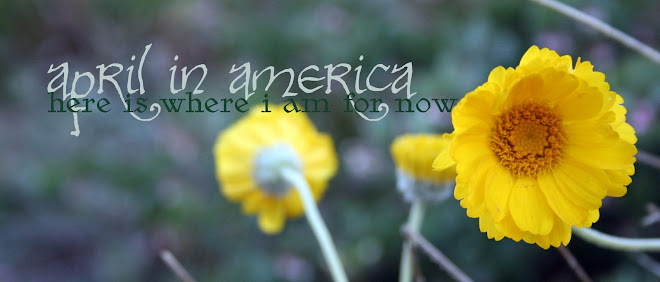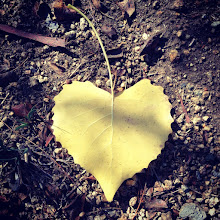In class we've learned about these nifty things called bioswales/bio medians/vegetated swales. Instead of a boring asphalt median painted green, a median is slightly concave and lined with cobble on the outer edges, then planted with appropriate species. (Imperial Highway between Santa Gertrudes and La Mirada Blvd is a great example, as is Temple Ave between the 57 exit and Valley.) A swale is a similar thing--any depression intended to channel water. Instead of a concrete-lined ditch, it could be planted with reeds or grasses or other plants that can handle occasional inundation.
These designs serve several purposes: they're much more attractive and that is good for people. They slow down, clean up, and absorb water before it hits the storm drains ("No dumping, drains to ocean"). That's important because most of the storm drain water around here goes straight to the sea, which is why i get so ticked when i see people toss fast food trash out their window. It's incredibly unpleasant to step on a crumpled plastic straw at the beach. Our storm drain system also is old: it wasn't designed to handle run-off from the plethora of housing developments that have sprung up like mushrooms in an over-watered lawn, so a bioswale slowing down the water (and absorbing some) allows a more appropriate flow rate into the system.
Another important function of these design features is phytoremediation, or plants cleaning up pollutants. Tire bits worn off by friction, brake linings, fluid drips, and other gunk is washed off parking lots and streets by rain and by any other water that runs down the street (like the people who water the sidewalk and the street when watering their grass. That would be your neighbors, of course, not you.). All that gunk also ends up in the ocean, just like your (sorry: their) straws. Not good. Not good for the ocean, not good for all the little fishies that swim in the sea, not good for me who eats fishies, not good for anyone who likes going to the beach. So, a bioswale's plants absorb a lot of those pollutants. Huzzah! Everyone thinks we've found a solution to pollution! Have the plants take care of it!
Wrong.
For one thing, while there are species that can handle this sort of environment, they are often not the prettiest plants to start with. Think crows and starlings and pigeons: sure, they can handle cities. I'd rather see a cardinal, an oriole, or a phoebe, personally. On top of that, if they are seriously polluted, these plants end up with growths and infections: a kind of plant version of cancer. They also die faster. Big deal, you say. So a plant dies. Trick is, these plants that have been absorbing all those pollutants don't deactivate those pollutants: they just contain them and keep them out of our water supply. That's great, but it doesn't solve the entire pollution problem. When bioswale plants die (or have to be pulled out and replaced) that plant has to be treated as toxic waste. Because it is. Plants, like us, are what they eat.
So, it's a good idea to have bio medians, but they are far from a magic bullet. If we pollute, and we do, there are things we can do to mitigate the effects of pollution: there are better and worse ways to pollute. We cannot undo the damaging effects completely though.
Like other aspects of life.
Thursday, June 5, 2008
Subscribe to:
Post Comments (Atom)
birding life list (in process!)
- White-crowned Sparrow (Zonotrichia ?) in winter
- Western Wood-Pewee (Contopu sordidulus)
- Western Tanager (Piranga ludoviciana)
- Western Scrub Jay (Aphelocoma californica)
- Western Bluebird (Sialia mexicana)
- Tufted Titmouse (Baeolophus bicolor)
- Stellar's Jay (Cyanocitta stelleri)
- Sparkling Violetear (Colibri coruscans)
- Snowy Owl (Nyctea scandiaca)
- Snowy Egret (Egretta thula)
- Ruddy Duck (Oxyura jamaicensis)
- Red-winged Blackbird (Agelaius phoeniceus)
- Red-tailed Hawk (Buteo jamaicensis)
- Pied Crow (Corvus albus)
- Northern Mockingbird (Mimus polyglottos)
- Northern Cardinal (Cardinalis cardinalis)
- Mourning Dove (Zenaida macroura)
- Mallard (Anas platyrhynochos)
- male Superb Sunbird (Cinnyris superbus) i think
- Malachite Kingfisher (Alcedo cristata)
- Lesser Goldfinch, greenbacked (Carduelis psaltria)
- Lazuli Bunting (Passerina amoena)
- Indigo Bunting (Passerina cyanea)
- House Finch (Carpodacus mexicanus)
- Hooded Oriole (Icterus cucullatus nelsoni)
- Greater Roadrunner (Geococcyx califorianus)
- Great Horned Owl (Bubo virginianus)
- Great Blue Heron (Ardea herodias)
- Congo African Grey (Psittacus erithacus erithacus)
- Common Garden Bulbul (Pychonotus barbatus)
- Cinnamon Teal (Anas cyanoptera)
- Cattle Egret (Bubulcus ibis)
- Canada Goose (Branta canadensis)
- California Towhee, juvenile (Pipilo crissalis)
- California Thrasher (Toxostoma redivivum)
- Brown Pelican (Pelecanus occidentalis)
- Blue Jay (Cyanocitta cristata)
- Black-crowned Night-Heron (Nycticorax nycticorax)
- Black-capped Chickadee (Poecile atricapillus)
- Black Phoebe (Sayornis nigricans)
- Black Crowned Waxbill (Estralida nonnula)
- Bald Eagle (Haliaeetus leucocephalus)
- Anna's Hummingbird (Calypte anna)
- American Robin (Turdus migratorius)
- American Kestrel (Falco sparverius)
- American Goldfinch (Carduelis tristis)
- American Coot (Fulica americana)
- American Avocet (Recurvirostra americana)
- African Pygmy-Kingfisher (Ispidina picta)
- Acorn Woodpecker (Melanerpes formicivorus)


1 comment:
Thanks April, that was really interesting! It is a good start but I agree, we have to reduce! I get really chapped when I see people throwing out their cigarette butts.
And I love your profile pic too, awesome!! Aloha, see you in the blogosphere!
Post a Comment